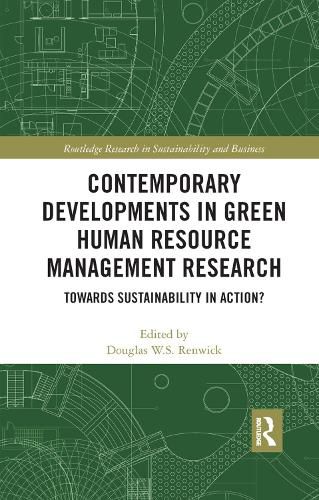Readings Newsletter
Become a Readings Member to make your shopping experience even easier.
Sign in or sign up for free!
You’re not far away from qualifying for FREE standard shipping within Australia
You’ve qualified for FREE standard shipping within Australia
The cart is loading…






This book examines a new topic in Human Resource Management (HRM), green - or environmental - HRM, analysing the role humans play in environmental management at work and environmental behaviours at workplaces around the world.
The book begins with a focus on negative workplace green behaviours (e.g. toxic chemical leaks, air pollution, contaminated waste etc.), and what such environmental problems mean for workers, managers and society as a whole.
This book outlines relevant, underpinning academic theory and research literature on how HRM is ‘going green’, and details real-life organisational examples derived from original and secondary empirical research to illuminate the implications of adopting Green HRM practices for relevant stakeholders. In doing so, the book offers a new, academic contribution to both the HRM and environmental management literatures.
$9.00 standard shipping within Australia
FREE standard shipping within Australia for orders over $100.00
Express & International shipping calculated at checkout
This book examines a new topic in Human Resource Management (HRM), green - or environmental - HRM, analysing the role humans play in environmental management at work and environmental behaviours at workplaces around the world.
The book begins with a focus on negative workplace green behaviours (e.g. toxic chemical leaks, air pollution, contaminated waste etc.), and what such environmental problems mean for workers, managers and society as a whole.
This book outlines relevant, underpinning academic theory and research literature on how HRM is ‘going green’, and details real-life organisational examples derived from original and secondary empirical research to illuminate the implications of adopting Green HRM practices for relevant stakeholders. In doing so, the book offers a new, academic contribution to both the HRM and environmental management literatures.